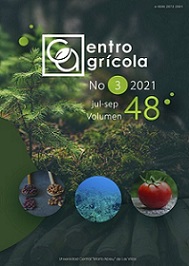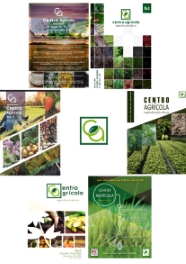CE: 1668 CF: cag02118
SCIENTIFIC ARTICLE
Morphophysiological and productive indicators of the pepper planted in the greenhouse and in the open field in the conditions of the Ecuadorian Amazon
Indicadores morfofisiológicos y productivos del pimiento sembrado en invernadero y a campo abierto en las condiciones de la Amazonía ecuatoriana
Reinaldo Demesio Alemán Pérez1, Javier Domínguez Brito1, Yoel Rodríguez Guerra1, Sandra Soria Re1, Roldán Torres Gutiérrez1, Julio César Vargas Burgos1 Carlos Bravo Medina1 y Jorge Luis Alba Rojas1
1 Docente–Investigador. Universidad Estatal Amazónica, km 2 ½ vía Tena (paso lateral) Puyo, Pastaza, Ecuador. Teléfono: 032889 – 118
E-mail: This email address is being protected from spambots. You need JavaScript enabled to view it.
ABSTRACT
The Ecuadorian Amazon is the poorest region of Ecuador, particularly the province of Pastaza. The production of vegetables in the region is very limited and only established in the greenhouse. The pepper (Capsicum annuum L.) is a horticultural product very demanded, however, there is a criterion that cannot be grown in the area. Therefore, since 2014, the Center for Research, Posgraduate and Conservation of Amazonian Biodiversity (CIPCA), belonging to Universidad Estatal Amazonica initiated a research program to evaluate the adaptation of different horticultural species plants to conditions in the region, in order to contribute to food sustainability. The study consisted of determining the behavior of the Nathalie hybrid pepper crop, planted in greenhouse and open field conditions, for which a randomized block design was used. Productions, physiological and morphological indicators of the crop were evaluated and the results obtained were made a statistical comparison of means. The results suggest that better morphophysiological indicators are obtained when it was sown in the greenhouse, with height of 136 cm and a foliar area of 0.95 m2. However, the best productive and agricultural performance indicators were obtained outside the greenhouse, with 9 fruits per plant, with an average fruit weight of 975.80 g and an average yield of 6.42 kg m-2. This indicates the convenience of establishing this crop in the Ecuadorian Amazon without sow in the greenhouse.





